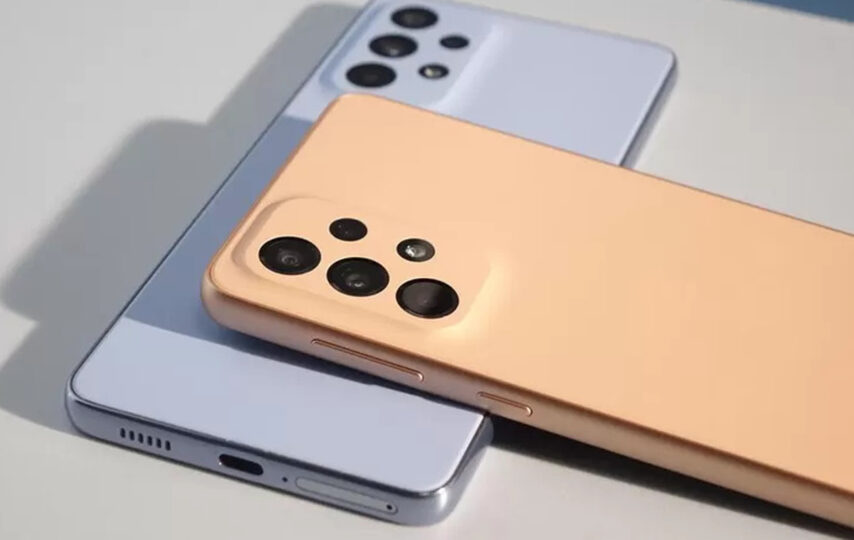The Samsung Galaxy A33 5G is a popular smartphone with impressive features, including a capable camera. The Samsung Galaxy A33 5G has a powerful camera system that allows users to capture stunning photos and videos. However, like any electronic device, it is not without its flaws. We will explore some common camera issues that users may encounter while using the Samsung Galaxy A33 5G and discuss possible solutions to overcome these problems.
Overview of the Samsung Galaxy A33 5G camera
Before discussing common camera issues, let’s get trained with the Samsung Galaxy A33 5G camera setup. The device features a primary rear camera with a high-resolution sensor and additional lenses for different photography needs. The front-facing camera is designed to capture high-quality selfies and assist in video calls.
The camera app allows users to access various shooting modes, adjust settings like exposure, white balance, and ISO, and use additional features such as HDR, Night mode, and panorama. Now, let’s explore some common issues that users may encounter with their Samsung Galaxy A33 5G camera and the steps to resolve them.
Blurry or out-of-focus images
One of the most frustrating issues users may face is capturing blurry or out-of-focus images. Thankfully, there are several troubleshooting steps to address this problem.
Checking the camera lens
The camera lens can sometimes get smudged or dirty, leading to blurred images. Take a clean microfiber cloth and gently wipe the lens to remove any fingerprints, dust, or debris.
Adjusting the focus settings
Ensure that the camera is set to autofocus mode. Tap on the screen where you want to focus, and the camera should adjust the focus accordingly. If the autofocus is not working correctly, try switching to manual focus mode and adjust the focus manually.
Using image stabilization
If your hands are shaky or if you’re capturing photos in low-light conditions, enabling image stabilization can help reduce blur. Look for the image stabilization option in the camera settings and turn it on.
Poor low-light performance
Low-light photography can be challenging, and the Samsung Galaxy A33 5G may struggle to deliver optimal results in such conditions. However, you can take specific steps to improve low-light performance.
Enabling Night mode
The Samsung Galaxy A33 5G features a dedicated Night mode that enhances the camera’s performance in low-light situations. Enable Night mode in the camera app to capture brighter, more detailed photos in dimly lit environments.
Using the camera flash
Consider using the camera flash to illuminate the subject when shooting in extremely low-light conditions. The flash can be manually enabled in the camera app or set to automatic mode.
Adjusting exposure settings
Experiment with the exposure settings to find the right balance for low-light photography. Increasing the exposure slightly can help capture more light and reduce image noise.
Slow autofocus or shutter lag
If you notice that the autofocus is slow or the shutter takes a long time to capture the photo, there are a few potential solutions to consider.
Clearing camera cache
Over time, the camera app’s cache can accumulate and impact its performance. Clearing the cache can help improve the responsiveness of the camera app. To do this, go to the device’s Settings, find the Apps section, locate the camera app, and clear its cache.
Updating camera software
Ensure your Samsung Galaxy A33 5G has the latest software updates installed. Manufacturers often release updates that address bugs and improve camera performance. Check for software updates in the device’s Settings and install any available updates.
Resetting camera settings
If the autofocus or shutter lag issue persists, you can try resetting the camera settings to their default values. This can be done within the camera app settings or through the device’s Settings menu.
Overexposed or underexposed photos
Sometimes, the camera may produce either overexposed (too bright) or underexposed (too dark) photos. Adjusting exposure settings can help mitigate this problem.
Adjusting exposure compensation
Many camera apps provide an exposure compensation slider allowing users to control the exposure level manually. Try reducing the exposure compensation to avoid overexposed photos or increase it to avoid underexposed ones.
Using HDR mode
High Dynamic Range (HDR) mode can help balance the exposure in scenes with high contrast, such as bright skies and shadowed subjects. Enable HDR mode in the camera app to capture more balanced photos in challenging lighting conditions.
Manual exposure control
Manual exposure control controls shutter speed, aperture, and ISO settings for advanced users. Experimenting with manual mode can help achieve the desired exposure for various shooting scenarios.
Grainy or noisy images
Grainy or noisy images can result from high ISO settings or other factors. Here are some steps to reduce noise and capture cleaner photos.
Using lower ISO settings
High ISO settings can introduce noise in images, especially in low-light conditions. Keep the ISO setting as low as possible while maintaining adequate exposure for cleaner images.
Avoiding digital zoom
Digital zoom can degrade image quality and introduce noise. Instead of digital zoom, consider getting closer to the subject or cropping the photo later during post-processing.
Post-processing noise reduction
If you’ve captured a noisy image, you can use photo editing software or dedicated noise reduction apps to reduce noise and improve image quality. These tools apply algorithms to smoothen the image and minimize noise artifacts.
The camera app crashes or freezes.
Experiencing frequent camera app crashes or freezes can be frustrating, but there are steps you can take to resolve this issue.
Clearing camera app cache
Like the slow autofocus issue, clearing the camera app’s cache can help resolve crashes or freezes. Go to the device’s Settings, find the Apps section, locate the camera app, and clear its cache.
Force-stopping the camera app.
If the camera app becomes unresponsive, you can force-stop and restart it. Go to the device’s Settings, find the Apps section, locate the camera app, and select the “Force stop” option. Then, relaunch the camera app.
Reinstalling the camera app
If the camera app continues to crash or freeze, reinstalling it might solve the problem. Uninstall the camera app from the device, restart the phone, and then reinstall the camera app from a trusted source like the Google Play Store.
The camera is not focusing on close-up subjects.
Try the following troubleshooting steps if the camera struggles to focus on close-up subjects.
Using macro mode
Most smartphone cameras have a dedicated macro mode for close-up photography. Enable the macro mode in the camera app to help the camera focus on nearby objects.
Cleaning camera lens
Dirt or smudges on the camera lens can interfere with the autofocus system. Gently clean the camera lens with a microfiber cloth to ensure it is free from obstructions.
Trying tap-to-focus feature
The tap-to-focus feature in the camera app can help you manually select the area you want to focus on. Simply tap on the screen where you want the camera to focus, and it should adjust accordingly.
Overheating issues while using the camera
Using the camera extensively can sometimes lead to overheating issues, affecting performance and potentially shutting down the camera app. Here are some steps to prevent overheating.
Closing background apps
Running multiple apps simultaneously can strain the device’s processor, leading to overheating. Close unnecessary apps are running in the background before using the camera to reduce the workload on the device.
Avoiding direct sunlight
Direct sunlight can heat the device quickly. When using the camera outdoors, try to find a shaded area or use your body to block direct sunlight from hitting the device directly.
Lowering screen brightness
Reducing the screen brightness can help minimize the heat generated by the device. Lower the screen brightness level before using the camera for extended periods.
Conclusion
The Samsung Galaxy A33 5G offers a unique camera system but may encounter common issues impacting the overall photography experience. Users can resolve issues by following the troubleshooting steps outlined in this article. Remember to keep the camera app and device software up to date and explore the various settings and shooting modes to maximize the Samsung Galaxy A33 5G’s camera capabilities. If you need Samsung Galaxy repairs, please get in touch with https://www.screenfixed.com.au/.








